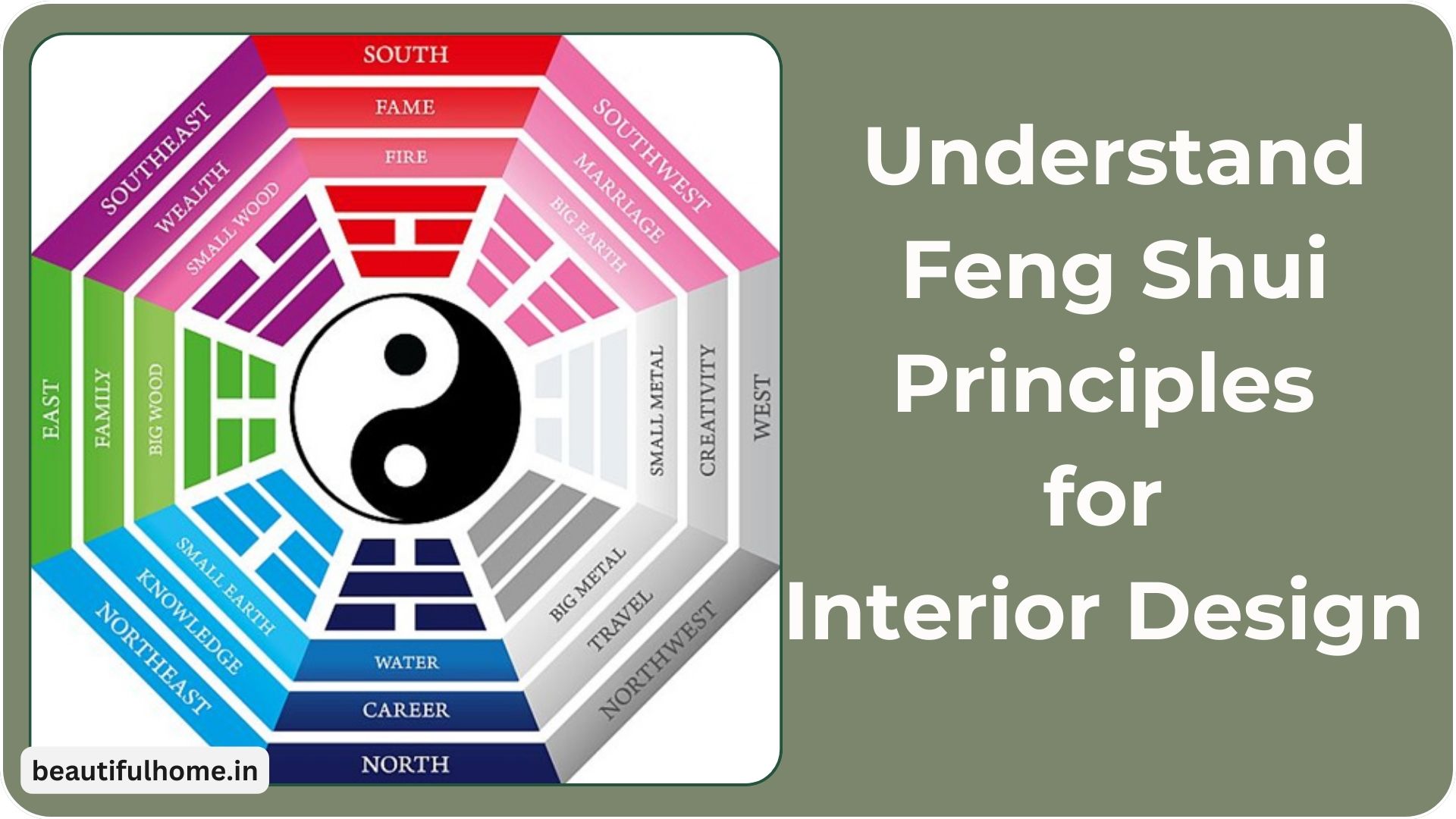
What is Feng Shui?
When it comes to the interior design of a home or office, people used to follow Feng Shui Principles. Feng Shui is an ancient Chinese practice that focuses on creating harmony between people and their environment. “Feng Shui” means “wind and water,” which is the balanced connection between nature and our living spaces. The main aspect of the principle is the placement of every object in the right space that can create positive energy, mood, and overall well-being. Let’s know Feng Shui and understand Feng Shui Principles for Interior Design.
The Importance of Energy (Chi)
In Feng Shui, energy is known as “Chi” (pronounced “chee”). Chi is believed to flow through everything, and the way we arrange our homes can either promote positive Chi or create blockages. When Chi flows freely, it brings good luck, health, and happiness. If it’s blocked, it can lead to stress, bad luck, or illness.
Key Principles of Feng Shui
1. The Five Elements
Basically, Feng Shui is based on five elements: Wood, Fire, Earth, Metal, and Water. Each element has its own characteristics and colors, and they interact with each other in various ways. Here’s a brief overview:
- Wood: Growth and vitality (green, brown)
- Fire: Passion and energy (red, orange)
- Earth: Stability and nourishment (yellow, beige)
- Metal: Clarity and strength (white, gray)
- Water: Flow and adaptability (blue, black)
Balancing these elements in your space can create a harmonious environment.
Must Consider Positive Vastu Tips for New Home
2. The Bagua Map
The Bagua Map is a tool used in Feng Shui to analyze the energy of a space. It divides a space into nine areas, each representing different aspects of life, such as wealth, health, relationships, and career. By placing objects and colors that correspond to these areas, you can enhance specific aspects of your life.
3. Clutter and Space
One of the most important Feng Shui principles is to keep your space clutter-free. Clutter blocks Chi and creates negative energy. Regularly declutter your home to promote a positive environment and keep only what you truly need or love. This helps to create space for new opportunities and good energy to flow in.
Feng Shui Tips for Interior Design
1. Positioning Furniture
Arrange your furniture to allow for easy movement and encourage conversation. The ideal position for a bed is facing the door but not directly in line with it. This creates a sense of security and control.
Things you should know about Using Mirror At Home
2. Use of Colors
Incorporate colors that align with the elements you want to enhance. For instance, if you want to boost creativity, add splashes of red (Fire) or green (Wood) through decor or furniture.
3. Natural Light and Air
Maximize natural light in your space to promote positive energy. Use mirrors to reflect light and create the illusion of a larger area. Also, ensure good air circulation by opening windows or using air purifiers.
Keep Negativity Away From Home
4. Incorporate Nature
Bringing nature indoors can enhance your space’s energy. Add plants, flowers, or natural materials to create a calming atmosphere. Choose plants that are easy to care for, like succulents or peace lilies.
5. Personal Touches
Finally, make your space personal. Use decor that resonates with you, such as photos or art that brings joy. This adds positive energy and makes your space feel welcoming.
Create a harmonious living environment by following Feng Shui principles during interior designing as well as in the architecture of the home or office. All you need to understand the logic & principles and incorporate them into your interior design. Enhance positive energy, mood and environment of space by following it. By doing basic rearranging of furniture, plants and small things you can fix all the things according to Feng Shui principles. Visit beautifulhome.in to get more helpful articles on Home Décor Ideas.





